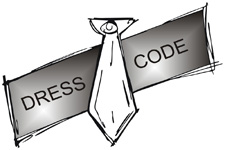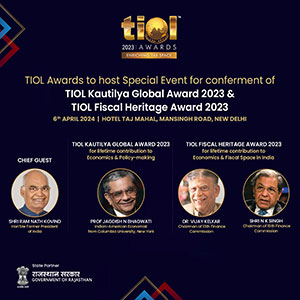I-T - Whether dress code prescribed for employees at work place would qualify as uniform, even if it is clear that there is nothing on record to suggest that there was any such dress code prescribed before issue of circular regarding 'compulsory wearing of uniform' - NO: HC
By TIOL News Service
AHMEDABAD, SEPT 27, 2016: THE issue in this case was Whether the dress code prescribed for employees at the work place would qualify as uniform, even if it is clear that there is nothing on record to suggest that there was any such dress code prescribed before the issue of circular regarding 'compulsory wearing of uniform'. No is the answer.
Facts of the case
The assessee is a Public Sector Undertaking. The issue in this case pertains to requirement of deducting TDS by the assessee as an employer on the payments made to the employees under the heading of uniform allowance. During the FY 2008-09, a survey operation was carried out by the Revenue at the premises of ONGC, during which, certain materials were collected concerning lapses in uniform allowance and the employees not wearing such uniforms if so sponsored by the employer. For the AY 2010-11, AO confronted the assessee with the assessee not having deducted tax at source on such benefits given to the employees. During the FY relevant to the said AY, according to AO, there was no uniform prescribed by the employer and that therefore the payment of allowances under the heading of uniform allowance would not fall within the exemption clause of section 10(14)(i). AO recorded a statement of senior finance and accounts officer of ONGC, who had appeared before him in response to a letter written to ONGC to file monthly details on various payments. AO noted that in such statement, he had contended that the ONGC had prescribed uniform upto 16.11.1995. The employees were issued cloth for the dress and the employees would get it stitched themselves, the stitching charges would be reimbursed. However, after 11.11.1995, the uniform prescribed by the ONGC for the employees was discontinued. It was decided by the company in a meeting between the management and association and the unions that such uniform be discontinued, but the benefit of uniform allowance would continue. 70% thereof would be paid as uniform allowance, 20% as canteen subsidy and 10% as washing allowance. The amount of such allowances was adjusted towards additional contribution to post-retirement benefit scheme. Thus, AO held that the employer had not prescribed any uniform and that the payment made to the employees as uniform allowances would not be covered by the exemption clause contained in section 10(14)(i). AO referred to the dictionary meaning of term 'uniform' as to conclude that unless there was a precise dress code with colour patterns, the same would not qualify as a uniform. AO held that the assessee was liable to deduct TDS, had failed to do so in terms of section 194. AO disallowed the expenditure incurred by the employer in paying such allowances.
On appeal before the CIT, assessee contended that the employees did wear uniforms to maintain decorum at the office. The finding of AO that during survey, many employees were found not wearing the uniform, would be a matter of disciplinary action. Recording the statement of senior finance and accounts officer, it was merely stated that 'he was not aware HR policy of assessee company. Further, merely because the same amount equivalent to uniform allowance was envisaged in PRBS, could not lead to adverse inference'. The AAC confirmed the view of AO, observing that if the assessee's interpretation of term 'uniform' were to be accepted, in every office any dress worn by the employees would qualify as uniform. It had also noted that the assessee had not disputed the fact that prescribed uniform was done away by ONGC since the year 1995. On further appeal, Tribunal at one stage, the Tribunal dismissed the appeal. The assessee, however, persuaded the Tribunal to revive the proceedings on the ground that certain important documents could not be placed before the Tribunal. In the second round before the Tribunal, the assessee produced a circular dated 29.03.2010 pertaining to reimbursement towards cost of purchase, stitching and maintenance of uniform, 'compulsory wearing of uniform'. The Tribunal however, was of the opinion that the said circular did not prescribe any uniform. It merely prescribed a dress code. The payment was therefore not exempt u/s 10(14)(i).
AO noted principally two things, one that during the survey operation, the employees were not wearing any uniform, two; in his statement, the senior finance and accounts officer of ONGC stated that though previously uniform was prescribed by the ONGC, with effect from 16.11.1995, such prescription was done away with. AO in fact, went on to state that despite discontinuance of uniform at work place, ONGC continued to pay uniform allowance, which was later on adjusted towards employees' contribution to the pension fund. The CIT(A) noted that though, the ONGC tried to turn down the statement of Shri R.P.Bhatt by suggesting that he was not a HR person, the ONGC nowhere contended his statement that after 16.11.1995, prescription of uniform was done away with was an incorrect statement. It was noticed the stand of ONGC before the CIT(A) in which, it was suggested that if a matching amount was deposited towards the employees' contribution to the pension fund, the same would still not mean that no uniform was prescribed. It would therefore appear that ONGC also did not dispute the later portion of Shri R.P.Bhatt's statement that such allowance was adjusted towards employees' liability to pension fund. The Tribunal was of the opinion that this circular did not prescribe what can be categorized as uniform and resultantly dismissed the appeal.
Held that,
++ it is true that the circular dated 29.03.2010 did not cover the period under consideration. However, we cannot find fault with the Tribunal in referring to such circular. Firstly, the circular was produced on record and relied upon by the ONGC. This would not however mean that the Tribunal could have held the issue against the assessee on the basis of such a circular if it applied during a period post the financial year in question. But, if we eliminate this circular from record, there was nothing else suggesting that the ONGC did prescribe any uniform for its employees, at least for the period under consideration. If the stand of the ONGC was that the circular dated 05.12.1987 held the field, it ought to have produced such circular on record. As noted, the Revenue had collected materials to suggest that there was no uniform prescribed. Statement of senior officer of the ONGC suggested that prescription for uniform made in the past was withdrawn since 1995. If the assessee desired to rebut such material, it had to produce necessary evidence in this respect. Having failed to do so, ONGC cannot criticize the Tribunal for referring to the circular dated 29.03.2010, which the ONGC itself desire to rely upon;
++ an alternative submission was made to the effect that the dress code at the work place would qualify as uniform. We find two difficulties in accepting this submission. Firstly, there is nothing on record to suggest that there was any such dress code prescribed before the said circular dated 29.03.2010 was issued. In absence of any evidence, it is not possible for us to ascertain the nature of dress code and its effect. Even if we proceed on the basis, for the sake of argument that the dress code as referred to in circular dated 29.03.2010 or similar was prescribed during the period under consideration, we do not find that the same would qualify as prescription of a uniform. We have reproduced the relevant portion of the circular dated 29.03.2010. Under this circular, the employer prescribed a dress code for male employees insisting that they must wear shirt which may be half or full sleeve. It should be buttoned and ironed, though stripe would be permissible, loud checks or printed shirts should be avoided. The employees would wear trousers of formal size and would not be permitted to wear cargo trousers. If ties are worn, they should match with the shirts and trousers, belts should be sober and footwear should be formal. Under certain circumstances, however, employees could wear sandals instead of shoes. For women, it was prescribed that they should wear ironed sarees of appropriate colors or traditional salwar kameez or ironed western business suits or formal ladies shirts with tailored dress or formal trousers;
++ these specifications, undoubtedly fit the common parlance meaning of "dress code" which is often referred to as the minimum standard of dressing depending on the place or occasion and can carry a wide range of choices at the command of the person concerned, of course, within certain parameters which would essentially exclude a certain dressing which is considered too informal or inappropriate for the occasion rather than to specify a precise set of clothes. The term 'uniform' in the context of dressing carries a vastly different connotation and would necessarily include precise instructions as to the dress, design, and also colours which will achieve a uniformity in dressing at a work place or at the place of study or some such collection of group of persons belonging to by and large a common class. The term uniform has been explained in the Webster's Third New International Dictionary (unabridged) as: marked by lack of variation, diversity, change in form, manner, worth or degree; marked by complete conformity to a rule or pattern or by salient detail or practice; marked by unvaried and changeless appearance. In the context of dressing, the term 'uniform' has been described in this dictionary as dress of a distinctive design or fashion adopted by or prescribed for members of a particular group (as an armed service, an order, or a social or a work group) and serving as a means of identification. It can thus, be seen that the term 'uniform' in the context of dressing carries a precise meaning and a meaning which is entirely different from a far more broader concept of a general dress code. We have noticed, the counsel for the assessee had also requested for remand so that the circular dated 05.12.1987 could be produced on record. In the past, the Tribunal had granted such opportunity, despite which this circular was not produced. No further opportunity need to be given now. Under the circumstances, we find no merits in these appeals. The same are dismissed. Before doing so, we may clarify that our observations are confined to the materials on record. If the ONGC produces any other evidence in this respect in the assessment proceedings which may be pending at different stages, the authorities would take a view on the basis of evidence that may be brought on record.
(See 2016-TIOL-2281-HC-AHM-IT)
















